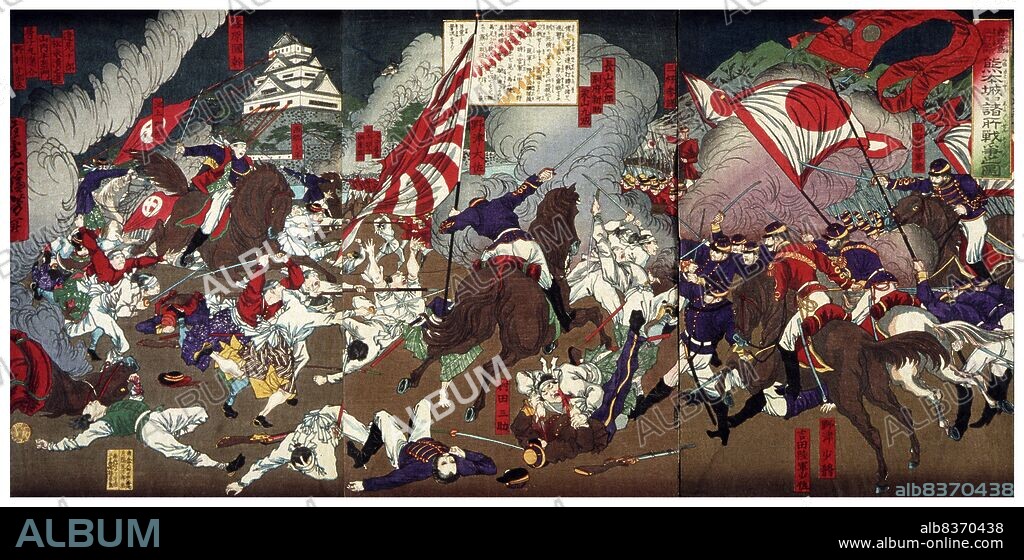alb8370438
Japan: 'Battle Around Kumamoto Castle', Meiji Period woodblock triptych by Tsukioka Yoshitoshi (1839-1892), late 19th century

|
Zu einem anderen Lightbox hinzufügen |
|
Zu einem anderen Lightbox hinzufügen |



Haben Sie bereits ein Konto? Anmelden
Sie haben kein Konto? Registrieren
Dieses Bild kaufen

Titel:
Japan: 'Battle Around Kumamoto Castle', Meiji Period woodblock triptych by Tsukioka Yoshitoshi (1839-1892), late 19th century
Untertitel:
Siehe automatische Übersetzung
The Satsuma Rebellion was a revolt that occurred nine years into the Meiji Era. After various military reforms had led to the lessening of samurai power and resulted in many unemployed samurai in the Satsuma Domain, Saigo Takamori, one of the senior Satsumi leaders, became worried about political corruption and the future role of samurai warriors.
. Saigo and his men eventually revolted in January 29, 1877, leading 20,000 to 30,000 samurai against the Japanese Imperial Army. The rebellion was decisvely crushed nine months later in September during the Battle of Shiroyama, the samurai outnumbered 60-to-1 by the Imperial Army. Saigo committed seppuku and killed himself rather than surrender, thus ending the last of a series of armed uprisings against the new government and effectively ending the samurai class.
. Saigo and his men eventually revolted in January 29, 1877, leading 20,000 to 30,000 samurai against the Japanese Imperial Army. The rebellion was decisvely crushed nine months later in September during the Battle of Shiroyama, the samurai outnumbered 60-to-1 by the Imperial Army. Saigo committed seppuku and killed himself rather than surrender, thus ending the last of a series of armed uprisings against the new government and effectively ending the samurai class.
Bildnachweis:
Album / Universal Images Group / Pictures From History
Freigaben (Releases):
Model: Nein - Eigentum: Nein
Rechtefragen?
Rechtefragen?
Bildgröße:
5100 x 2524 px | 36.8 MB
Druckgröße:
43.2 x 21.4 cm | 17.0 x 8.4 in (300 dpi)
Schlüsselwörter:
ASIEN • ASIEN, KONTINENT • AUFRUHR • AUFSTAND • BEUTE • BRANDSCHATZUNG • KONTINENT, ASIEN • KUNST • MEUTEREI • PLUENDERN • PLUENDERUNG • PLÜNDERUNG • REBELLION • REVOLTE • SAIGO TAKAMORI • SAMURAI (VOELKERKUNDE) • SAMURAI (VÖLKERKUNDE) • SCHLOSS ALLE • SCHLOSS • STAUDAMM • STAUWEHR • TRIPTYCHON • WEHR
 Pinterest
Pinterest Twitter
Twitter Facebook
Facebook Link kopieren
Link kopieren Email
Email
